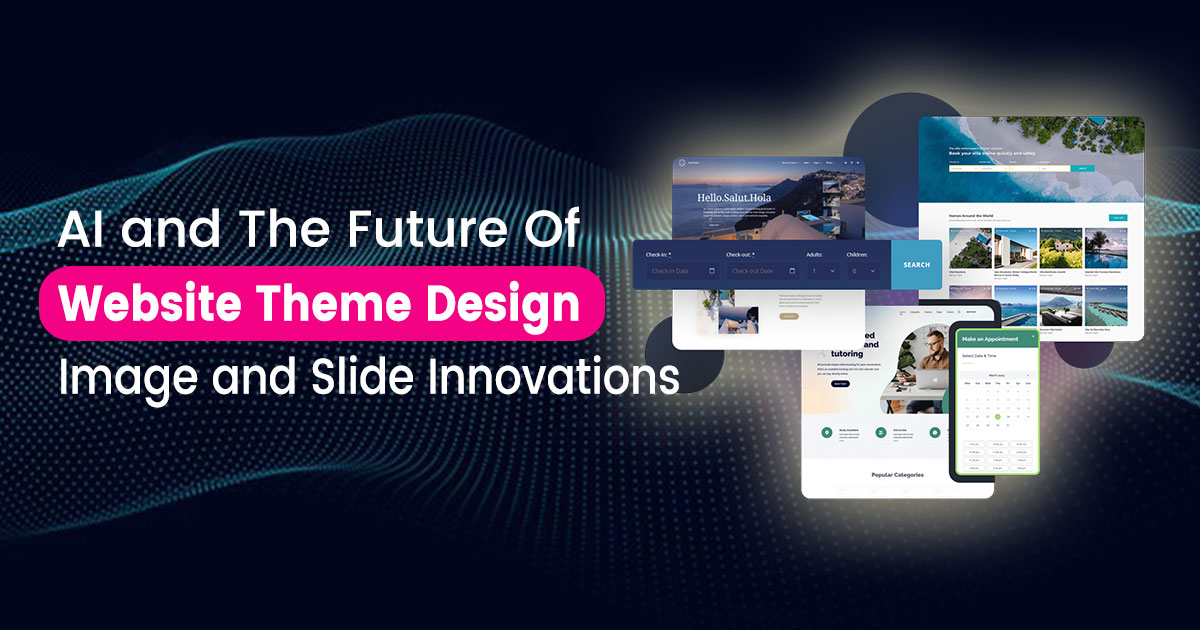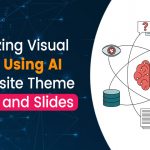AI and The Future Of Website Theme Design: Image and Slide Innovations
|
Getting your Trinity Audio player ready...
|
AI and The Future Of Website Theme Design: Image and Slide Innovations
Artificial intelligence (AI) has become an increasingly powerful force across various industries, revolutionizing how businesses and individuals approach tasks. One area where AI is making a significant impact is website theme design, particularly in the realms of image and slide innovations. As AI continues to evolve, it is reshaping the landscape of web design, enabling more dynamic, personalized, and visually captivating experiences for users. This article explores how AI is driving the future of website theme design, focusing on the transformative innovations in images and slides.
The Role of AI in Website Theme Design
Traditionally, web design has been a manual process involving graphic designers, developers, and content creators. With the advent of AI, many of these processes are becoming automated, reducing the time and effort required while enhancing creative possibilities. AI-powered design tools can analyze vast amounts of data, understand user preferences, and generate tailored website themes with minimal input. This shift is empowering even those without coding or design skills to create professional-grade websites with ease.
Customization and Personalization: One of the key advantages of AI in website theme design is its ability to personalize experiences based on user behavior and preferences. By analyzing data such as user interactions, browsing history, and demographic information, AI algorithms can dynamically adjust the website’s design elements to cater to individual visitors. For instance, AI can alter color schemes, fonts, and layout structures based on what is likely to appeal to a specific user, creating a more engaging experience.
Image Innovations: AI-Generated Visuals
Images are a vital component of any website, influencing user engagement, aesthetics, and functionality. In the future, AI will further transform how images are selected, generated, and optimized in website design.
AI-Generated Images: In the past, web designers had to rely on stock photos or manually created images for their sites. Today, AI-generated images are becoming more prevalent. Tools like DALL·E and DeepArt use AI to generate unique, high-quality visuals based on simple text descriptions. This allows designers to produce tailored images that fit the specific needs of a website theme without having to source or create them manually. AI image generation is not just about random creativity but about aligning the generated visuals with the overall theme and user expectations, providing a more cohesive and customized experience.
Image Optimization: AI is also making significant strides in optimizing images for web performance. Large, unoptimized images can slow down website loading times, negatively affecting the user experience and search engine rankings. AI tools can automatically compress and resize images without sacrificing quality, ensuring that websites load quickly while maintaining high visual standards. Additionally, AI can analyze an image’s content and automatically generate descriptive alt-text for improved accessibility and SEO.
Content-Aware Scaling and Cropping: Another image-related innovation driven by AI is content-aware scaling and cropping. Traditional image resizing often results in important elements being cut off or distorted. AI can intelligently recognize the essential parts of an image and adjust the scaling or cropping accordingly, ensuring that the visual integrity of the image remains intact. This technology is particularly useful for responsive web design, where images need to adapt seamlessly across different screen sizes and devices.

Slide Innovations: AI-Enhanced Interactivity
Slideshows and carousels are common elements in website design, often used to display featured content, products, or promotional messages. AI is revolutionizing how slides are designed and presented, enhancing both interactivity and user engagement.
Automated Slide Design: Designing engaging slides can be time-consuming, especially for larger websites. AI-powered tools like Beautiful.AI and Visme are streamlining this process by automating slide creation. These tools can analyze the content and context of the website and generate visually appealing slides with appropriate fonts, layouts, and animations. They can also adapt the design in real-time based on user interactions, creating a dynamic experience that evolves with each visit.
Personalized Slide Content: Much like with images, AI can personalize the content of slides based on user behavior and preferences. For example, an AI-powered website might display different product slides to different users based on their browsing history or previous purchases. This level of personalization increases the likelihood of engagement, as users are more likely to interact with content that feels relevant to their interests.
Real-Time Adjustments: AI can also make real-time adjustments to slideshows based on user interaction patterns. If the system detects that users are frequently skipping certain slides, it can automatically adjust the order, timing, or content of the slides to improve engagement. This adaptive capability ensures that the most relevant and engaging content is presented to each user, maximizing the effectiveness of the slideshow feature.
Enhanced Transitions and Animations: AI is also playing a role in enhancing slide transitions and animations. While traditional slide transitions are often pre-set and static, AI can introduce dynamic transitions that adjust based on user behavior or external factors. For example, AI can create smoother transitions when users linger on a particular slide, or it can speed up transitions if users are quickly navigating through the content. This creates a more fluid and responsive user experience that feels intuitive and engaging.
AI and The Future of Website Theme Design
As AI continues to develop, its role in website theme design will become even more significant. The innovations in image and slide design discussed in this article are just the beginning. Future advancements in AI could bring about even more immersive and personalized web experiences, with themes that can dynamically evolve based on real-time user feedback and environmental factors.
AI as a Creative Partner: One of the most exciting prospects is the potential for AI to become a creative partner in the design process. Rather than merely automating tasks, AI could collaborate with designers to generate ideas, suggest design elements, and even participate in creative brainstorming sessions. This partnership would enable designers to focus on higher-level creative decisions while AI handles the more technical and repetitive aspects of the design process.
Ethical Considerations and Accessibility: As AI plays a larger role in website theme design, it’s important to consider the ethical implications. Designers must ensure that AI-generated content is inclusive, accessible, and free from bias. For instance, AI must be programmed to consider accessibility standards, ensuring that websites are usable by individuals with disabilities. Additionally, designers must remain vigilant in ensuring that AI-generated themes do not inadvertently reinforce harmful stereotypes or exclude certain user groups.
AI is undeniably transforming the future of website theme design, particularly in the areas of image and slide innovations. From AI-generated visuals to personalized, adaptive slideshows, these technologies are enabling designers to create more dynamic, engaging, and user-friendly websites. As AI continues to evolve, it will further enhance the creative process, offering new opportunities for personalization, automation, and user interactivity. Ultimately, the integration of AI into website theme design promises a future where every website is as unique as the user who visits it.

 Previous Post
Previous Post Next Post
Next Post